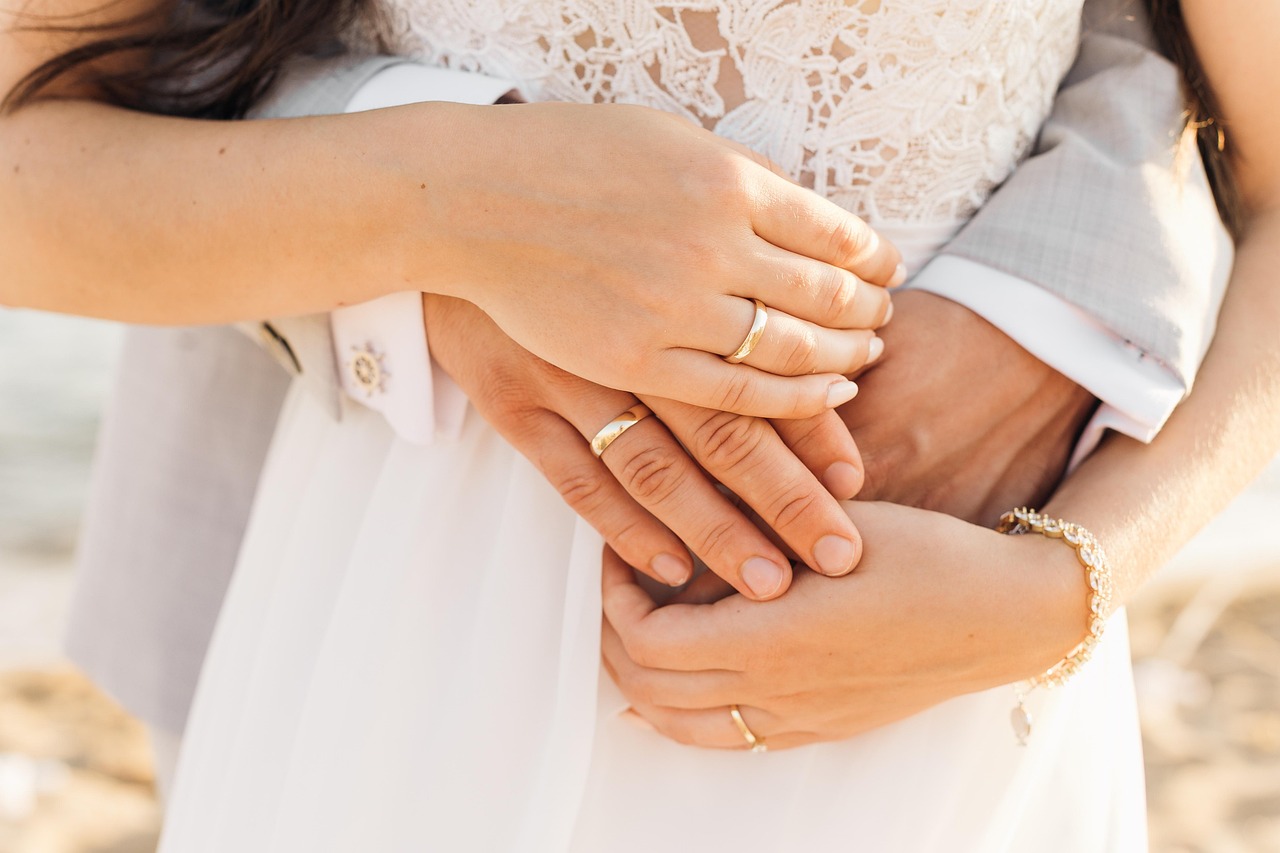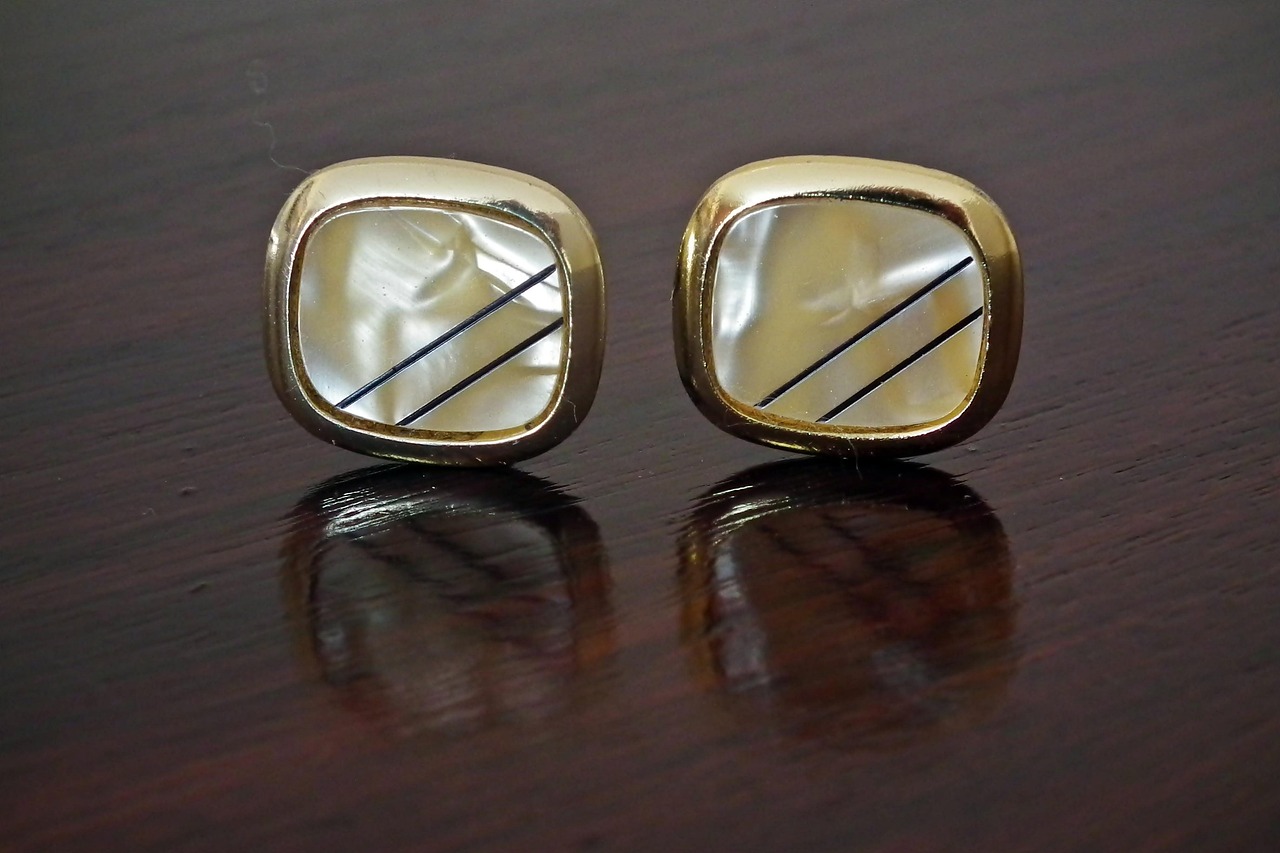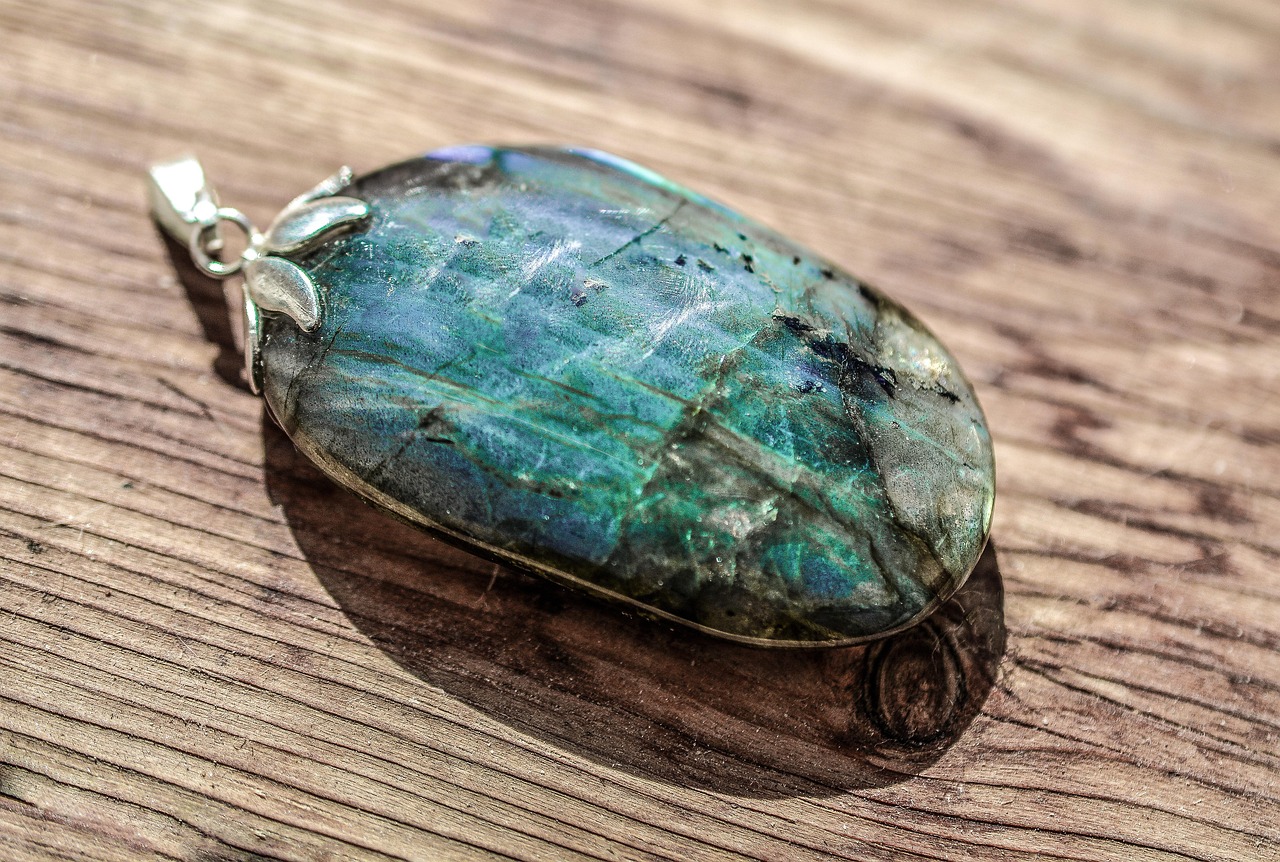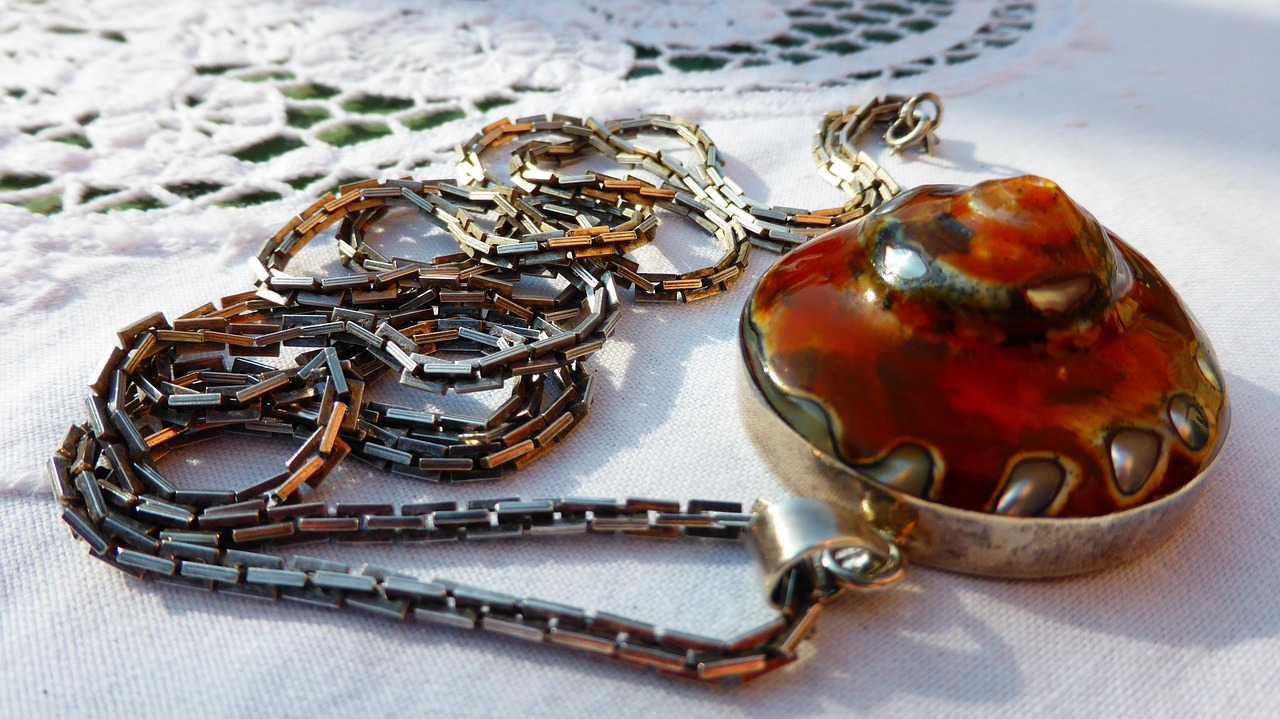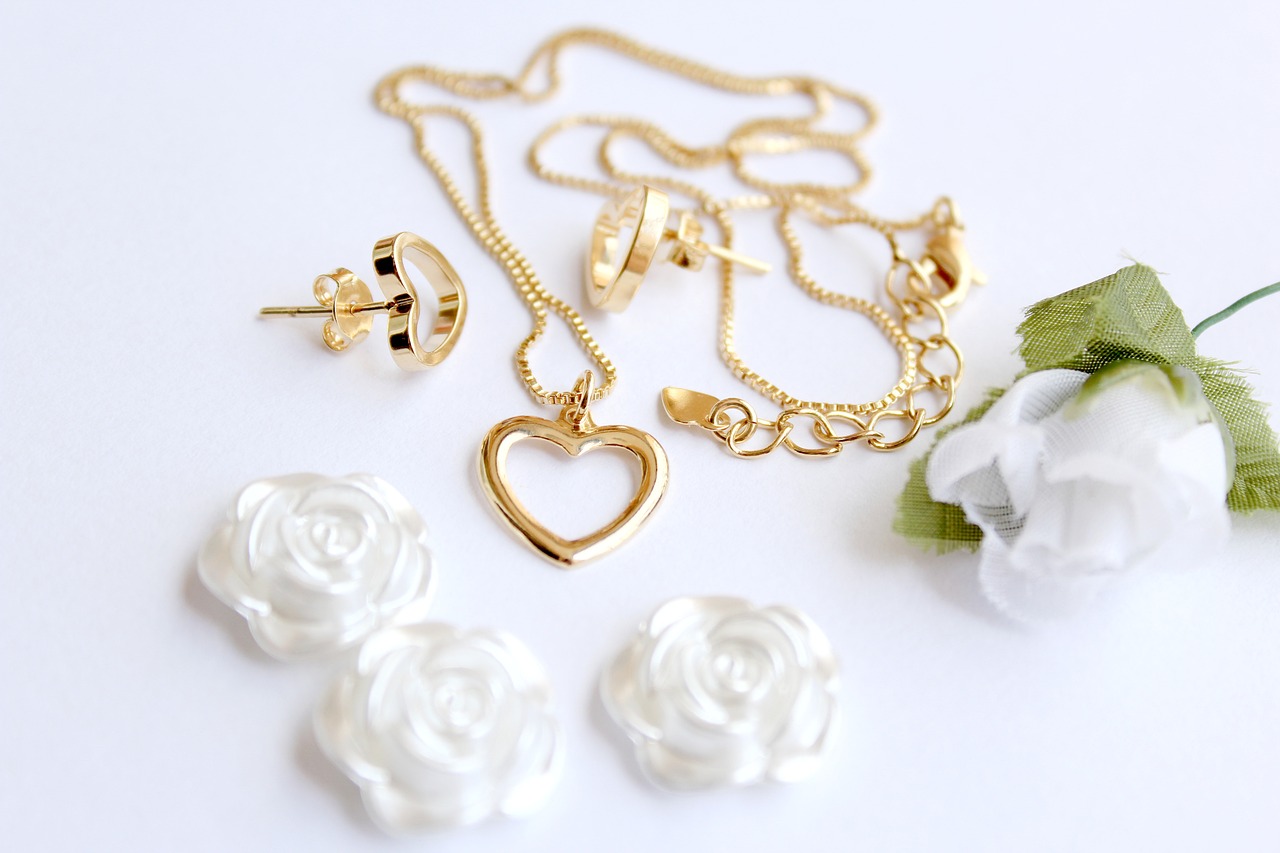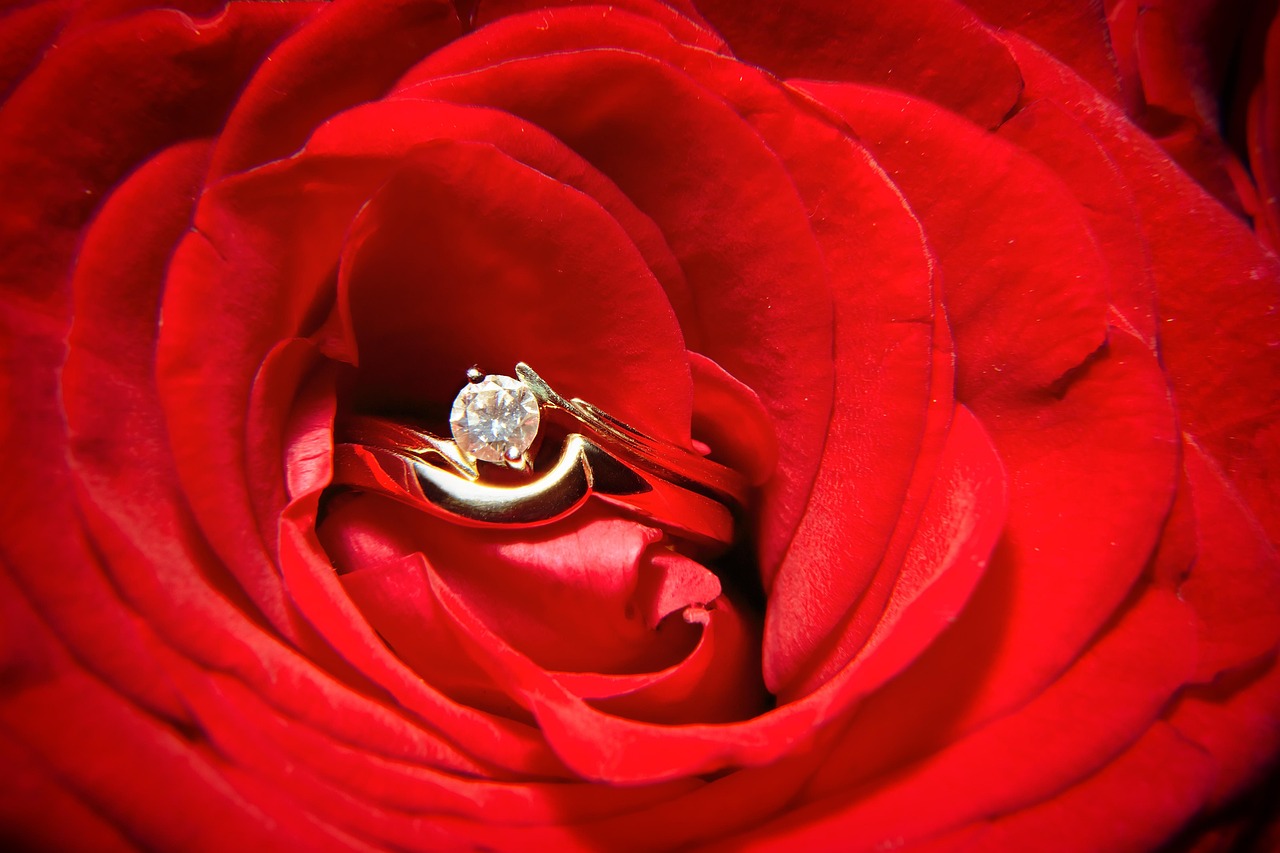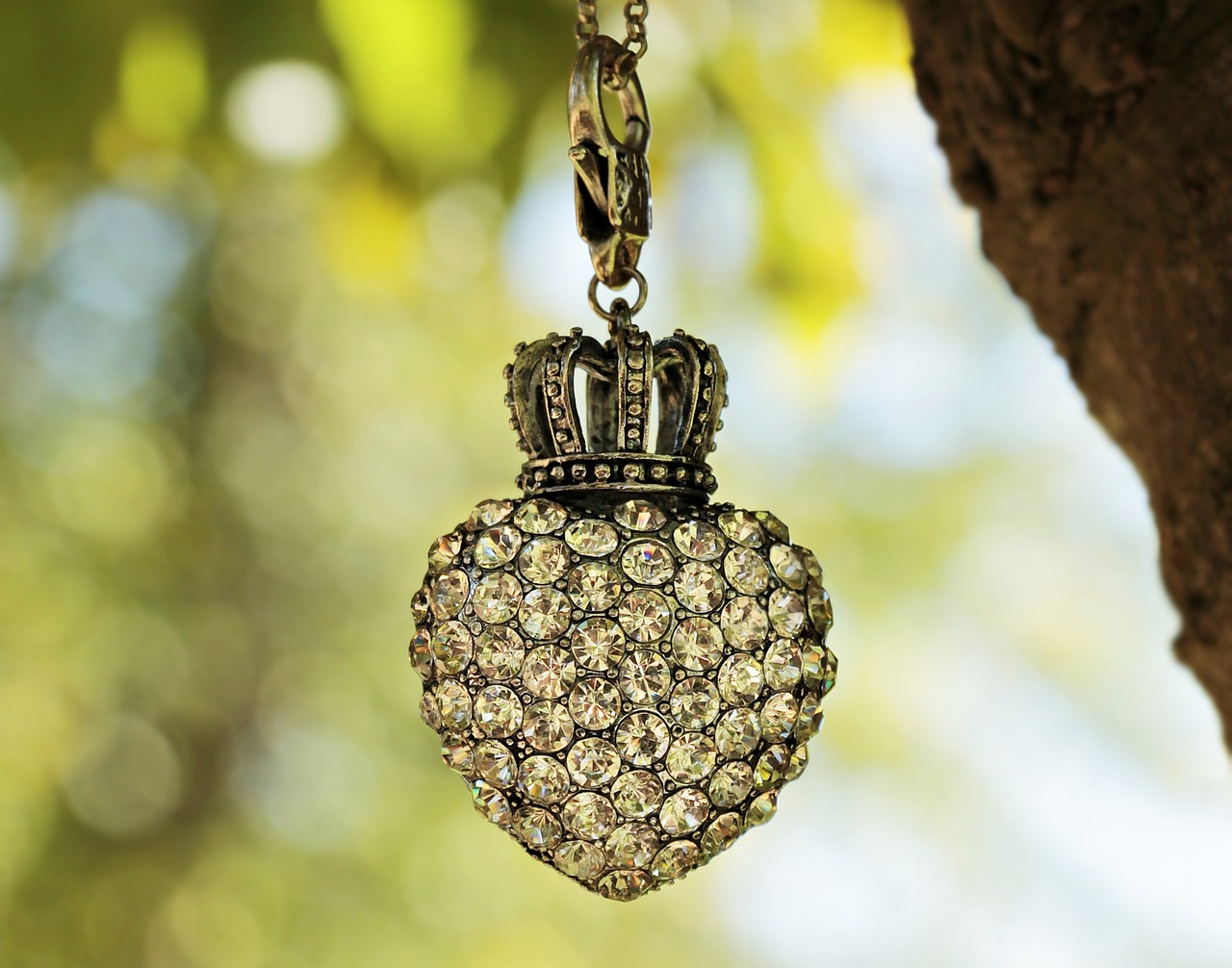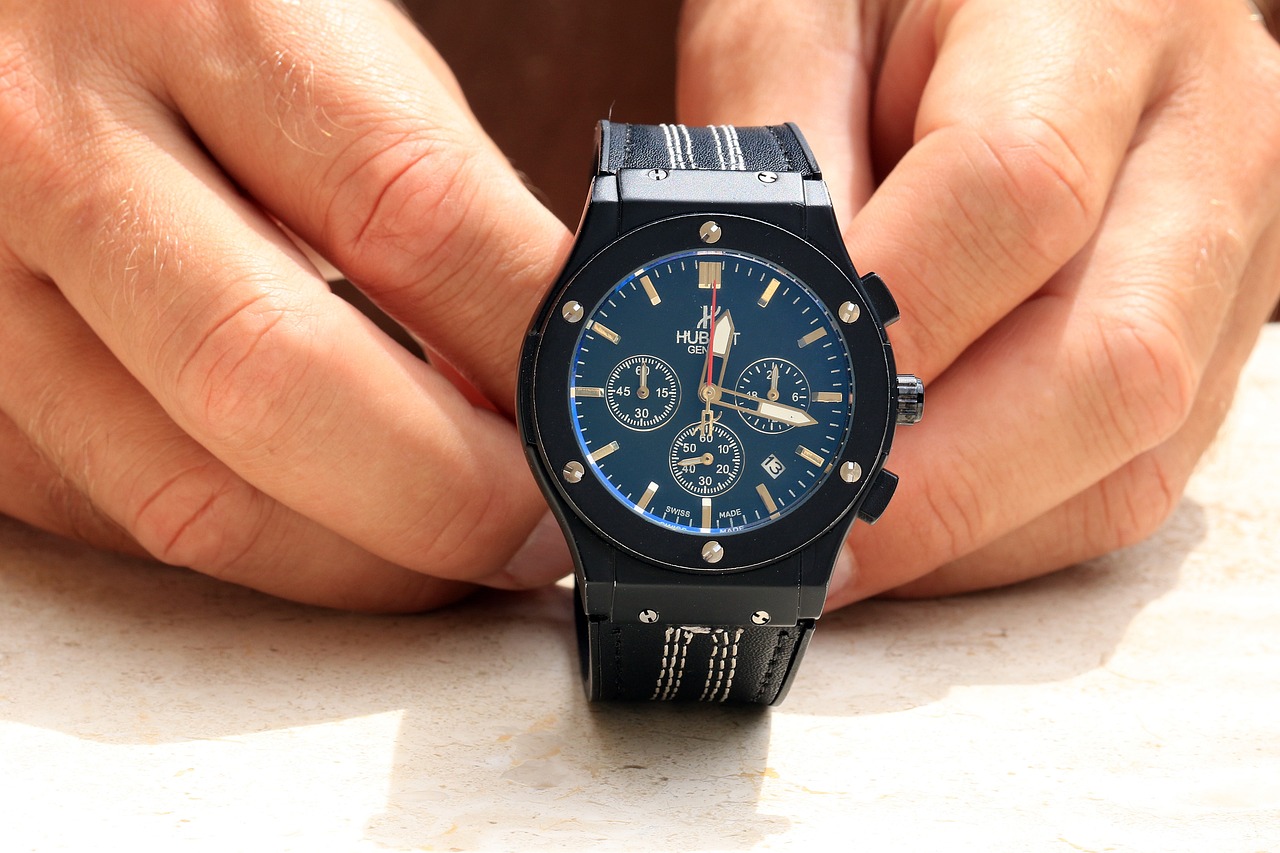This article examines the impact of engraving and personalization on the value of jewelry. By exploring market trends, consumer preferences, and expert opinions, we aim to provide you with insightful information to help you make informed decisions regarding your jewelry investments.
Engraved jewelry refers to pieces that feature customized inscriptions or designs, often making them unique. Common practices in the jewelry industry include initials, dates, or meaningful quotes, allowing the wearer to express their identity or commemorate special occasions.
Personalization can significantly influence the perceived value of jewelry. Unique engravings often enhance the emotional value, as they can represent personal stories or milestones. However, this personalization may also affect the piece’s resale value, as potential buyers might not share the same emotional connection.
Understanding the distinction between emotional and resale value is crucial for consumers when navigating their jewelry choices. While emotional connections can enhance the value for the owner, they may not translate into financial worth for future buyers.
- Personal Stories: Each engraved piece may hold a unique narrative.
- Milestones: Engravings can commemorate significant life events.
- Sentimental Attachment: Personal connections often outweigh financial considerations.
Current market trends indicate that personalized jewelry may have varying resale values compared to non-personalized pieces. While some consumers seek out unique engravings, others may prefer classic designs that appeal to a broader audience.
Shifts in consumer preferences play a pivotal role in shaping the jewelry market. Many buyers are increasingly drawn to personalized pieces, as they offer a sense of individuality and exclusivity. This trend highlights the growing demand for unique items that reflect personal style.
The speed at which engraved jewelry sells can fluctuate based on current trends and consumer interest. Some studies suggest that personalized pieces may sell more quickly in certain markets, while others may not experience the same demand.
- Design: Unique and appealing designs often attract buyers.
- Brand Reputation: Well-known brands may sell faster due to trust and recognition.
- Market Demand: Current trends can significantly influence selling speed.
A comparative analysis reveals that while some engraved pieces may sell faster, others may lag behind non-personalized jewelry. This variance often depends on the target audience and prevailing market trends.
Expert opinions are invaluable in understanding the value of engraved jewelry. Jewelers and appraisers alike provide insights into how personalization impacts overall worth.
Jewelers often emphasize that consumer behavior is shifting towards personalized jewelry, which can enhance its value. They note that unique engravings can create a stronger emotional connection, influencing purchasing decisions.
Appraisers typically assess the value of engraved pieces by considering both craftsmanship and personalization. They argue that while unique engravings can add sentimental value, they may not always translate into higher financial worth in the resale market.
Before committing to engraving, several factors should be evaluated to ensure that personalization aligns with your long-term jewelry goals.
Finding a balance between long-term investment potential and personal satisfaction is essential. Consider whether the emotional value of engraving will outweigh potential resale challenges in the future.
Selecting the appropriate engraving style can significantly influence a piece’s value and appeal. Opt for styles that enhance both aesthetic and sentimental value, ensuring that the engraving resonates with your personal taste.
Questions surrounding the restoration and resale of engraved jewelry are common. Understanding the feasibility of restoring personalized pieces and their resale potential can guide your decisions.
Various restoration options exist for engraved jewelry, depending on the extent of wear or damage. Techniques may include refinishing or re-engraving to restore the piece’s original beauty.
The resale market for engraved jewelry can be challenging, as personalized pieces may not appeal to a wide audience. Understanding market dynamics can help you navigate selling personalized items effectively.
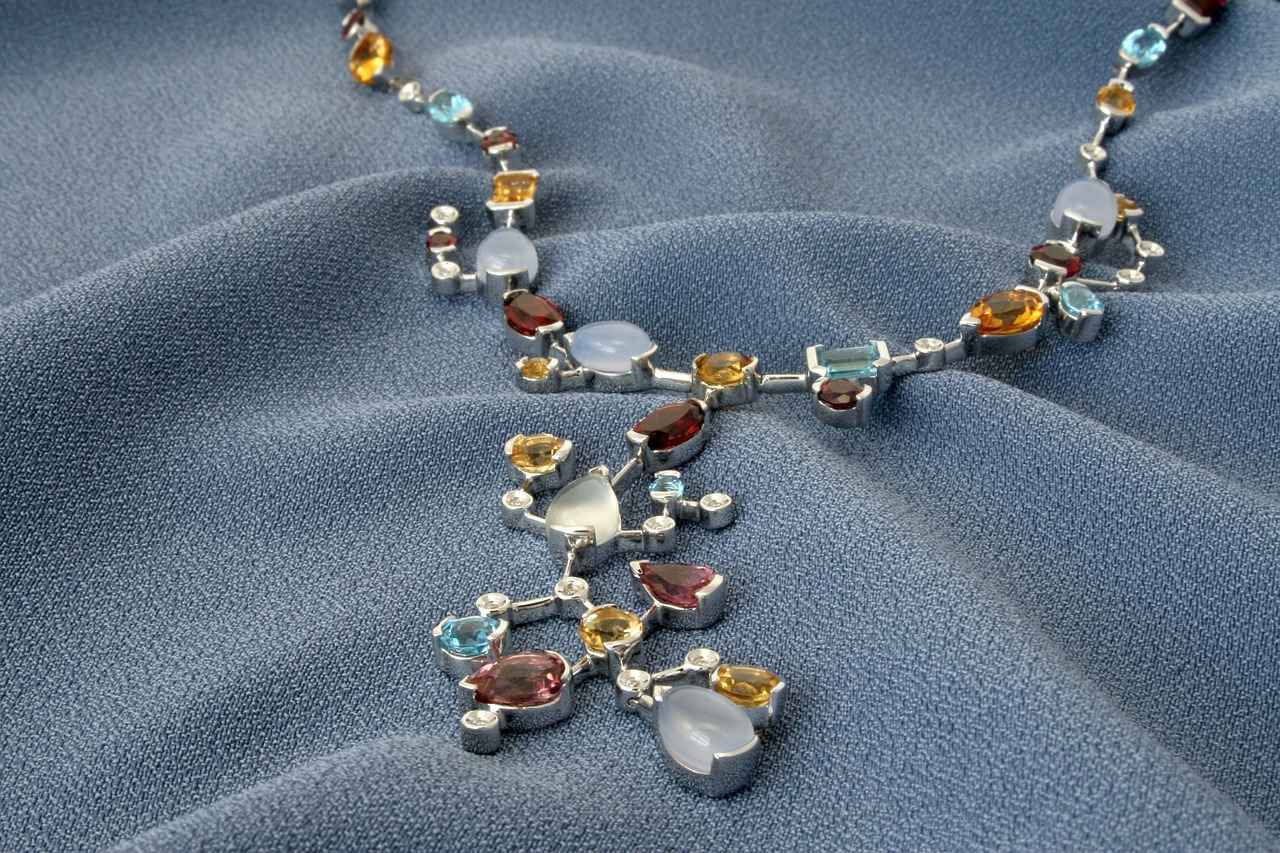
What is Engraved Jewelry?
Engraved jewelry has become increasingly popular for its ability to convey personal messages and unique designs. This form of jewelry allows individuals to express their emotions, commemorate special occasions, or celebrate relationships through personalized inscriptions. But what exactly does engraved jewelry entail? Let’s delve deeper into its definition and the common practices surrounding it in the jewelry industry.
Engraved jewelry refers to any piece of jewelry that features a personalized inscription or a unique design etched onto its surface. This can include names, dates, quotes, or intricate patterns that hold special meaning for the wearer. The engraving process can be accomplished through various techniques, such as laser engraving, hand engraving, or machine engraving, each offering different levels of detail and customization.
Common types of engraved jewelry include:
- Rings: Often used for weddings or anniversaries, rings can be engraved with names or significant dates.
- Bracelets: These can be personalized with messages or coordinates, making them popular gifts.
- Necklaces: Pendants can feature initials or meaningful symbols, adding a personal touch.
- Lockets: These can hold photos or messages, making them cherished keepsakes.
The practice of engraving jewelry is not just a modern trend; it has historical roots dating back centuries. Ancient civilizations often engraved items for decorative purposes, as well as for practical uses such as identifying ownership. In today’s market, engraved pieces are often sought after for their sentimental value and the emotional connections they forge.
Moreover, the rise of personalization in consumer products has influenced the jewelry industry significantly. Many jewelers now offer customization options, allowing customers to create one-of-a-kind pieces that resonate with their personal stories. This trend reflects a broader shift towards valuing unique, individualized items over mass-produced goods.
In conclusion, engraved jewelry represents a beautiful blend of artistry and personal significance. The ability to customize jewelry not only enhances its aesthetic appeal but also deepens its emotional resonance, making it a cherished item for anyone who wears it. Understanding the definition and common practices surrounding engraved jewelry helps consumers appreciate the artistry involved and the personal stories that these pieces can tell.
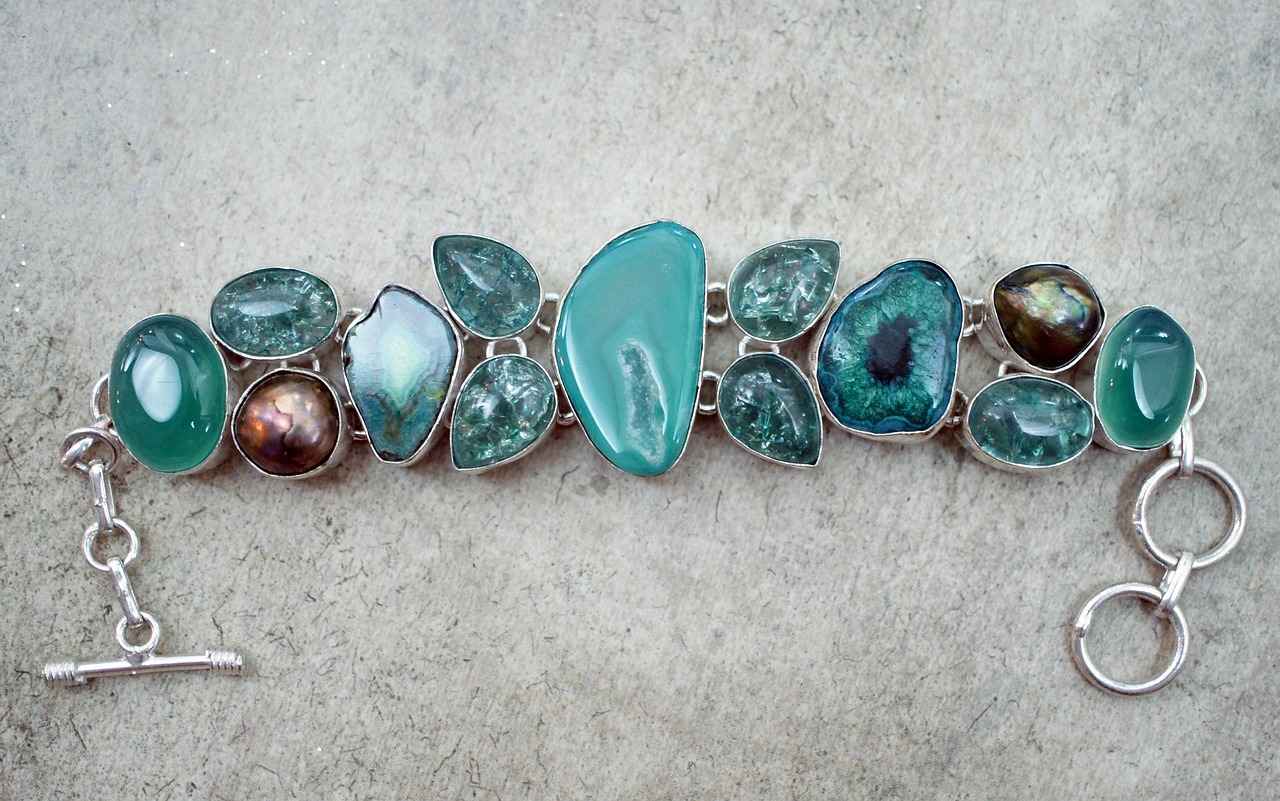
How Does Personalization Affect Jewelry Value?
When it comes to jewelry, personalization plays a crucial role in shaping its value. This section delves into how unique engravings and custom designs can enhance the emotional appeal of jewelry while also affecting its potential resale value. Understanding these dynamics can help consumers make informed choices about their jewelry investments.
Unique engravings on jewelry pieces often serve as a testament to personal stories, milestones, and cherished memories. These engravings can elevate the emotional value of the item, making it more than just a decorative accessory. For many, a piece of engraved jewelry can symbolize love, commitment, or significant life events, thus increasing its sentimental worth.
Engraved jewelry holds a unique place in the hearts of its owners. The emotional value derived from personalized pieces often surpasses their monetary worth. For instance, a necklace engraved with a loved one’s initials or a date of significance can evoke powerful feelings that contribute to its overall value. This emotional connection can make it nearly irreplaceable, as it often embodies personal narratives and cherished memories.
While personalized jewelry can enhance emotional value, it may pose challenges in the resale market. Many potential buyers may prefer non-personalized items, which could limit the resale opportunities for engraved pieces. However, the uniqueness of a personalized item can also attract niche markets willing to pay a premium for something that resonates with their own experiences.
- Market Demand: The demand for personalized jewelry can fluctuate based on current trends.
- Quality of Craftsmanship: High-quality engravings by skilled artisans can retain value better than poorly executed designs.
- Brand Reputation: Well-known brands may see better resale values for personalized pieces due to their established credibility.
Consumer preferences play a vital role in shaping the jewelry market. Many buyers are increasingly leaning towards personalized items, viewing them as unique expressions of individuality. This trend reflects a broader shift towards valuing self-expression and sentimental connections over traditional notions of luxury.
Recent market trends indicate a growing acceptance and desire for personalized jewelry. Consumers are not only seeking pieces that tell their stories but also those that can be customized to reflect their unique identities. This shift has led to an increase in demand for engraving services, with many jewelers offering tailored options to meet consumer preferences.
Experts in the jewelry industry provide valuable insights into how personalization impacts value. Many jewelers emphasize that while personalized pieces may have a limited resale market, their emotional significance often outweighs financial considerations. Appraisers also note that the unique nature of engraved jewelry can appeal to specific buyers, potentially enhancing its resale value in the right circumstances.
Before committing to an engraving, it’s essential to weigh the potential benefits against the drawbacks. Consider the long-term implications of personalization on both emotional satisfaction and resale potential. Selecting the right engraving style can also influence the piece’s appeal, making it crucial to choose designs that resonate with both personal significance and aesthetic value.
In summary, while personalization can significantly enhance the emotional value of jewelry, it may complicate resale opportunities. Understanding the balance between emotional attachment and market dynamics is vital for anyone considering engraved jewelry as an investment.
Emotional Value vs. Resale Value
When it comes to jewelry, the value of a piece can be perceived in two distinct ways: emotional value and resale value. Understanding the differences between these two forms of value is essential for consumers navigating their jewelry choices. This section will delve into how personal connections often outweigh financial considerations, influencing purchasing decisions and long-term satisfaction.
Emotional value refers to the significance a piece of jewelry holds for an individual, often tied to memories, milestones, or relationships. For example, an engagement ring may carry immense emotional weight due to the love story it represents, making it invaluable to the wearer regardless of its market price. This intrinsic value can lead to a deeper appreciation for the piece, often surpassing its monetary worth.
Resale value, on the other hand, is determined by market demand, brand reputation, and the overall condition of the jewelry. Factors such as material quality, craftsmanship, and market trends directly influence how much a piece can be sold for in the future. While some personalized jewelry may retain or even appreciate in value, many pieces, especially those with engravings, may not fetch high prices on the resale market.
Many consumers find that the emotional connections they form with their jewelry can lead to a reluctance to sell, even if the financial return is appealing. For instance, a necklace gifted by a loved one may hold greater sentimental value than its resale price. This emotional attachment can create a scenario where individuals prioritize the memories associated with the piece over its monetary value.
- Family Heirlooms: Passed down through generations, these pieces often carry stories and traditions that enhance their sentimental worth.
- Milestone Celebrations: Jewelry received during significant life events, such as anniversaries or graduations, often becomes treasured items.
- Personal Achievements: Custom pieces made to commemorate personal successes can evoke pride and joy, reinforcing their emotional value.
For those considering purchasing personalized jewelry, it is crucial to balance emotional satisfaction with potential resale value. While a piece may not have high resale potential, the joy and connection it brings can far outweigh financial considerations. Consumers should assess their motivations for buying jewelry: Is it for personal enjoyment, or is it viewed as an investment?
Current trends show that personalized jewelry is gaining popularity, but this does not always translate to high resale values. The market often favors classic, timeless designs over customized pieces. Understanding these trends can help consumers make informed decisions about their purchases, ensuring that they align with both personal desires and potential future value.
Experts in the jewelry industry often emphasize the importance of emotional value. Jewelers frequently note that while resale value is a factor, the stories and sentiments attached to a piece can enhance its worth in the eyes of the owner. This perspective encourages consumers to appreciate their jewelry for the joy it brings rather than solely its market price.
In conclusion, navigating the complexities of emotional and resale value in jewelry involves understanding personal motivations and market dynamics. By recognizing the significance of emotional connections, consumers can make more fulfilling choices that resonate beyond financial considerations.
Factors Influencing Emotional Value
Engraved jewelry holds a unique place in the hearts of many, serving as a tangible reminder of significant moments and cherished relationships. The emotional value associated with these pieces often surpasses their monetary worth, making them invaluable to the wearers. Understanding the factors that contribute to this emotional significance can help individuals appreciate their jewelry on a deeper level.
One of the primary factors influencing the emotional value of engraved jewelry is the personal stories attached to each piece. Whether it is a birthday, anniversary, or a special achievement, these milestones are often commemorated through inscriptions. For instance, an engagement ring engraved with a couple’s initials or a meaningful date can evoke memories of love and commitment, enhancing its sentimental worth.
Moreover, the sentimental connection to the giver also plays a crucial role. Jewelry passed down through generations often carries the weight of family history, making it a cherished heirloom. An engraved locket containing a photograph of a loved one can serve as a daily reminder of their presence, thus amplifying its emotional value.
Additionally, the customization aspect of engraved jewelry allows individuals to express their identity and personal style. This personalization fosters a sense of ownership and pride, as wearers can choose designs and messages that resonate with their values and beliefs. For example, an engraved bracelet with an inspirational quote can serve as a daily affirmation, further deepening its emotional significance.
Another factor to consider is the emotional journey associated with acquiring the piece. The process of selecting, designing, and engraving jewelry can be a meaningful experience in itself. This journey often creates lasting memories, which enhance the emotional connection to the item. Whether it’s a gift from a loved one or a self-purchase to mark a personal achievement, the story behind the piece contributes to its value.
Moreover, cultural significance can also amplify the emotional value of engraved jewelry. In many cultures, certain symbols or inscriptions hold particular meanings, making the jewelry not just an accessory but a representation of one’s heritage and beliefs. For instance, a piece engraved with a traditional motif may resonate deeply with someone’s cultural background, providing a sense of belonging and identity.
Lastly, the emotional response elicited by the jewelry can fluctuate over time. As life events unfold—such as weddings, births, or loss—the meaning of the engraved piece can evolve. This dynamic nature of emotional value ensures that engraved jewelry remains relevant and significant throughout different stages of life.
In summary, the emotional value of engraved jewelry is shaped by a multitude of factors, including personal stories, sentimental connections, customization, the emotional journey of acquisition, cultural significance, and evolving meanings over time. Understanding these influences allows individuals to appreciate their jewelry not just as decorative items, but as profound symbols of their life experiences and connections.
Market Trends in Resale Value
The jewelry market is constantly evolving, influenced by various factors such as consumer preferences, economic conditions, and emerging trends. Market trends dictate the resale value of jewelry, and understanding these trends is crucial for anyone considering buying or selling jewelry, especially personalized pieces.
Personalized jewelry, which includes items like engraved rings, bracelets, and necklaces, has seen a significant rise in popularity over the past few years. This surge can be attributed to a growing desire for unique and meaningful pieces that resonate with individual stories and experiences. As a result, personalized jewelry often commands a higher resale value compared to non-personalized items.
When analyzing the resale market, it’s essential to compare personalized jewelry with non-personalized pieces. Generally, non-personalized jewelry, such as classic designs and brand-name items, tends to have a stable resale value. However, the uniqueness of personalized jewelry can create a niche market that appeals to specific buyers looking for something special.
- Brand Recognition: Well-known brands often retain their value better, regardless of personalization.
- Market Demand: Trends in consumer preferences can significantly affect resale values. Personalized pieces that align with current trends may sell for a premium.
- Condition of the Piece: The physical condition of jewelry plays a crucial role in its resale value. Well-maintained items, whether personalized or not, are more likely to fetch a higher price.
- Emotional Attachment: Personalized jewelry often carries emotional significance, which can enhance its perceived value among buyers.
Today’s consumers are increasingly drawn to personalized items that tell a story or commemorate special moments. This shift in preference has led to a vibrant resale market for personalized jewelry, where buyers are willing to pay a premium for pieces that reflect their identity or personal experiences. In contrast, non-personalized jewelry may appeal to those looking for classic or investment pieces but might lack the emotional connection that drives higher resale values in personalized items.
Experts in the jewelry industry suggest that the resale value of personalized jewelry is likely to continue rising as more consumers seek unique items. Jewelers and appraisers often note that while personalized pieces may not always have the same investment potential as high-end brand jewelry, their emotional value can make them highly desirable in the resale market.
In conclusion, understanding the current trends in the resale market for personalized jewelry reveals that these pieces can hold significant value, particularly when they resonate with buyers on a personal level. As consumer preferences evolve, the demand for unique, meaningful jewelry is expected to grow, further influencing the dynamics of the resale market.
Consumer Preferences for Personalized Jewelry
Consumer preferences have increasingly become a driving force in the jewelry market, particularly when it comes to personalized and engraved pieces. As the demand for unique jewelry continues to rise, understanding these preferences is essential for both consumers and retailers alike. This section provides a comprehensive overview of current trends influencing the market and the factors that contribute to the growing popularity of personalized jewelry.
One of the primary reasons consumers are gravitating towards personalized jewelry is the desire for individuality. In a world where mass production is the norm, many people seek items that reflect their personal stories and identities. Personalized jewelry allows individuals to express themselves through custom engravings, making each piece truly one-of-a-kind.
- Engraved Names and Initials: Many consumers opt for jewelry that features their names or initials, creating a personal connection to the piece.
- Significant Dates: Engraving important dates such as anniversaries or birthdays adds sentimental value, making the piece more meaningful.
- Custom Messages: Short, heartfelt messages or quotes are increasingly popular, allowing wearers to carry a personal mantra or memory with them.
- Birthstones and Symbols: Incorporating birthstones or symbols that hold personal significance further enhances the emotional connection to the jewelry.
The shift towards personalized jewelry has led to significant changes in the jewelry industry. Retailers are now focusing on offering customization options to meet consumer demand. This trend is not just limited to high-end jewelers; even mass-market retailers are incorporating personalized sections into their product lines.
Social media platforms have played a pivotal role in shaping consumer preferences for personalized jewelry. Influencers and celebrities showcasing their custom pieces have sparked interest among followers, leading to increased demand. Additionally, the ability to share personal stories associated with jewelry on social media encourages others to seek similar pieces.
Indeed, younger generations, particularly Millennials and Gen Z, are driving the trend towards personalized jewelry. They value authenticity and uniqueness, often opting for pieces that tell a story or represent their values. This generational shift is prompting brands to innovate and offer more customized options.
In summary, consumer preferences for personalized and engraved jewelry are reshaping the jewelry market. The desire for individuality, fueled by social media influence and the appeal of unique, meaningful pieces, is leading retailers to adapt their offerings. As these trends continue to evolve, understanding consumer preferences will be crucial for both buyers and sellers in the jewelry industry.

Do Engraved Pieces Sell Faster?
The jewelry market is a dynamic landscape, influenced by various factors including consumer preferences, market trends, and the unique attributes of individual pieces. One question that often arises among jewelry enthusiasts and potential buyers is, “Do engraved pieces sell faster?” This section aims to explore the intricacies of selling engraved jewelry and how personalization impacts its market performance.
Engraved jewelry, which includes personalized inscriptions, symbols, or designs, often holds a special place in the hearts of consumers. The emotional connection that comes with a custom piece can significantly enhance its desirability. As a result, personalized jewelry tends to attract buyers looking for unique gifts or meaningful keepsakes.
Several elements can affect how quickly engraved jewelry sells:
- Market Demand: High demand for personalized items can lead to faster sales. Trends in gifting, especially during holidays or special occasions, can drive this demand.
- Design and Craftsmanship: Well-crafted pieces with intricate designs often appeal more to buyers, enhancing their selling potential.
- Brand Reputation: Established brands with a reputation for quality and personalization can see quicker sales due to consumer trust.
When comparing the selling speed of engraved jewelry to non-personalized pieces, the differences can be striking. Engraved items often resonate more with buyers seeking a personal touch, while non-personalized jewelry may appeal to those looking for classic or timeless designs. Research indicates that personalized jewelry can sell up to 30% faster in certain markets, particularly during peak seasons.
Current consumer preferences lean heavily towards personalized products. According to recent surveys, over 60% of consumers express a desire for personalized gifts, particularly for occasions like anniversaries, weddings, and graduations. This trend underscores the increasing importance of personalization in the jewelry market.
Industry experts, including jewelers and market analysts, suggest that the emotional value associated with engraved pieces can outweigh traditional resale considerations. Jewelers often note that buyers are willing to pay a premium for items that tell a story or commemorate a significant life event.
In summary, the speed at which engraved jewelry sells can indeed be influenced by various factors, including market demand, design quality, and consumer preferences. Personalized pieces often resonate more with buyers, leading to quicker sales compared to their non-personalized counterparts. For those considering an investment in jewelry, understanding these dynamics can help in making informed decisions.
Factors That Influence Selling Speed
The selling speed of engraved jewelry can be influenced by a myriad of factors that intertwine design aesthetics, brand reputation, and market demand. Understanding these elements is crucial for both buyers and sellers in the jewelry market.
The design of engraved jewelry plays a pivotal role in its marketability. Unique and eye-catching designs often attract more buyers. For instance, intricate patterns or personalized messages that resonate emotionally with potential customers can lead to quicker sales. Moreover, the choice of materials—such as gold, silver, or platinum—also affects desirability. Trendy designs that align with current fashion can significantly enhance the speed at which a piece sells.
Brand recognition can greatly influence the selling speed of engraved jewelry. Established brands with a strong reputation for quality and craftsmanship tend to sell faster than lesser-known brands. Consumers often associate well-known brands with reliability and prestige, prompting quicker purchasing decisions. Additionally, brands that actively engage with their audience through social media and marketing campaigns can create a sense of urgency and excitement around their products, further enhancing sales velocity.
Market demand plays a critical role in determining how quickly engraved jewelry sells. If a particular style or type of engraving is trending, pieces that fit those criteria will likely move faster. For example, during special occasions such as weddings, anniversaries, or holidays, there is often a spike in demand for personalized jewelry. Keeping abreast of market trends and consumer preferences is essential for sellers to capitalize on these opportunities.
Pricing is another significant factor that can influence the selling speed of engraved jewelry. Competitive pricing can attract more buyers, while overpricing can deter potential customers. Sellers should conduct thorough market research to set prices that reflect both the quality of the jewelry and current market conditions. Offering promotions or discounts can also accelerate sales, particularly during peak shopping seasons.
The emotional connection that buyers feel towards engraved jewelry can greatly impact its selling speed. Pieces that tell a story or commemorate a significant life event tend to resonate more with consumers. Sellers who effectively communicate the emotional value of their jewelry—through storytelling in marketing materials or personalized customer interactions—can significantly enhance buyer interest and expedite sales.
When comparing the selling speeds of engraved versus non-personalized jewelry, it’s clear that personalization often leads to faster sales in certain markets. While non-personalized pieces may appeal to a broader audience, engraved jewelry taps into the desire for uniqueness and personal significance. This niche market can lead to quicker turnover for sellers who understand their target audience.
In conclusion, the selling speed of engraved jewelry is influenced by a combination of design, brand reputation, market demand, pricing strategies, and emotional connections. By understanding and leveraging these factors, both buyers and sellers can navigate the jewelry market more effectively.
Comparative Analysis with Non-Personalized Jewelry
In the world of jewelry, the debate between engraved and non-personalized pieces is ongoing. A comparative analysis of selling speeds between these two categories provides valuable insights into consumer behavior and market dynamics. Understanding how personalization impacts sale timelines can help both buyers and sellers make informed decisions.
Personalization through engraving can significantly influence the selling speed of jewelry. Engraved pieces often carry a unique emotional connection for the buyer, which can lead to quicker sales. The sentimental value attached to personalized items may encourage buyers to act swiftly, especially if the piece commemorates a special occasion or relationship.
The market demand for personalized jewelry has shown a notable increase in recent years. Consumers are increasingly seeking items that reflect their individuality and personal stories. This trend has resulted in engraved jewelry often selling faster than its non-personalized counterparts. Factors such as social media influence and the rise of gifting culture further amplify this demand.
- Design and Aesthetics: The visual appeal of engraved jewelry can attract buyers more quickly than non-personalized pieces. Unique designs often stand out in a crowded market.
- Brand Reputation: Well-known brands that offer personalized options may experience faster sales due to their established trust and customer loyalty.
- Market Trends: Seasonal trends and events, such as holidays or anniversaries, can influence the selling speed of both engraved and non-personalized jewelry.
Recent surveys indicate that consumers are more inclined to purchase engraved jewelry due to its emotional significance. Many buyers view personalized items as more meaningful gifts, which can lead to quicker purchasing decisions. In contrast, non-personalized jewelry may require more consideration and time to select, resulting in slower sales.
When comparing selling timelines, engraved jewelry tends to move faster in various market conditions. For instance, during peak gifting seasons, personalized pieces often see a surge in demand, leading to quicker turnover. In contrast, non-personalized items may linger on the shelves longer, as they lack the emotional connection that drives immediate purchases.
Experts in the jewelry industry have noted that the emotional appeal of engraved pieces often translates to faster sales. Jewelers report that customers are more likely to purchase engraved items on impulse, particularly when they resonate with personal experiences or memories. This insight underscores the importance of personalization in the jewelry market.
In summary, the comparative analysis of selling speeds between engraved and non-personalized jewelry reveals that personalization can significantly enhance the likelihood of quicker sales. Factors such as emotional value, market demand, and consumer preferences play crucial roles in shaping these dynamics. As the jewelry market continues to evolve, understanding these elements will be essential for both consumers and sellers.
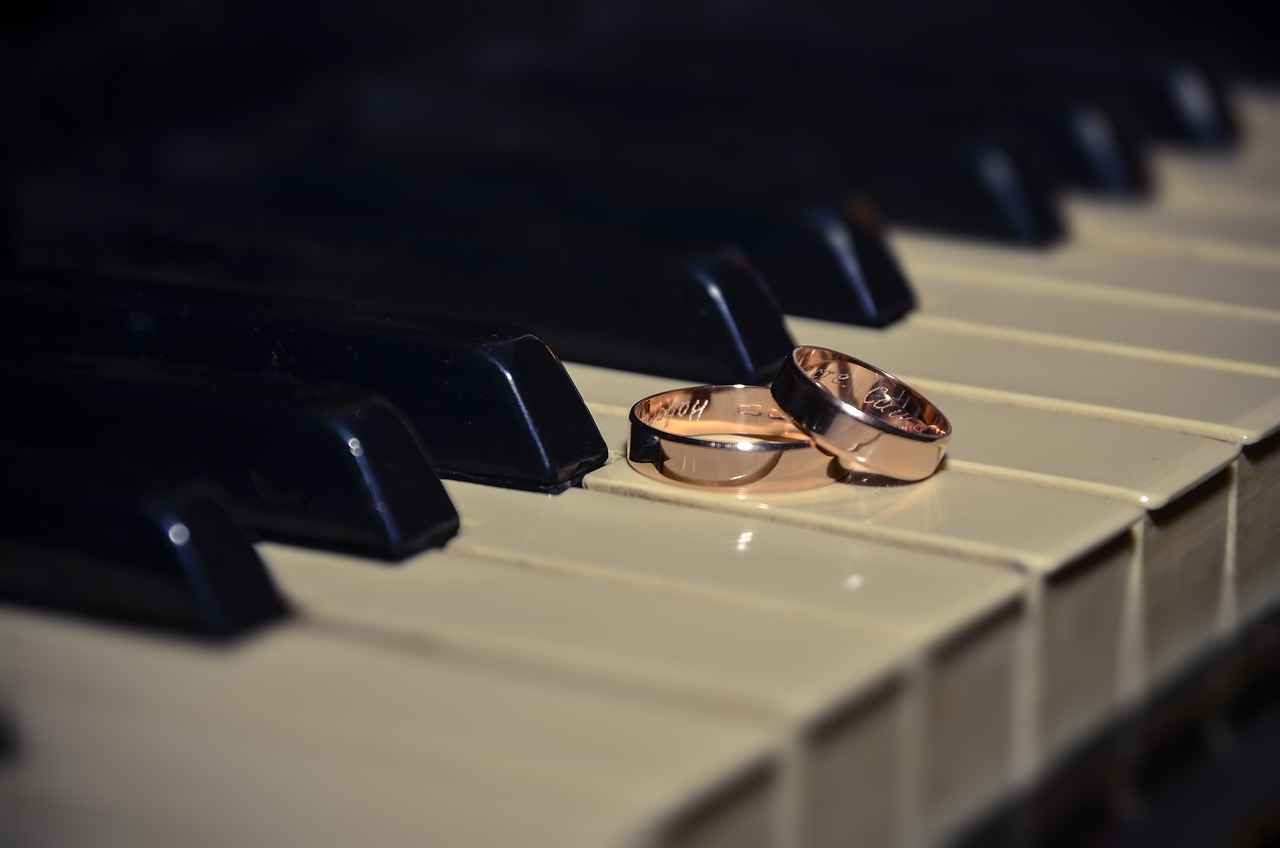
What Experts Say About Engraved Jewelry Value?
When it comes to understanding the value of engraved jewelry, expert opinions are invaluable. This section gathers insights from seasoned jewelers and professional appraisers, shedding light on how personalization can influence both emotional and market value.
Jewelers are often on the front lines of consumer behavior, observing trends and preferences firsthand. According to industry experts, engraving can significantly enhance the emotional value of a piece. Many jewelers report that customers often choose to engrave items to commemorate special occasions, such as weddings, anniversaries, or the birth of a child. This personalization creates a unique connection between the wearer and the jewelry, which can be difficult to quantify in monetary terms but is undeniably impactful.
Additionally, jewelers note that engraved pieces can sometimes command higher prices due to their uniqueness. Consumers are often willing to pay a premium for items that tell a personal story, making engraved jewelry a compelling choice for both gifting and personal use. However, jewelers also caution that while personalization adds sentimental value, it may not always translate to higher resale value, especially if the engraving is highly specific or personal.
Appraisers provide a more objective viewpoint when it comes to valuing engraved jewelry. They emphasize that while personalization can enhance emotional appeal, it can also complicate the resale process. Appraisers often evaluate engraved pieces differently than non-personalized items, considering factors such as the quality of the engraving, the material of the jewelry, and the demand for similar personalized items in the market.
One key insight from appraisers is that the value of engraved jewelry can fluctuate based on market trends. For instance, if personalized jewelry becomes a popular trend, the resale value may increase. Conversely, if the market shifts towards minimalist or non-personalized designs, engraved pieces may not hold their value as well. Understanding these market dynamics is crucial for anyone considering investing in engraved jewelry.
Consumer preferences play a pivotal role in shaping the market for engraved jewelry. Recent surveys indicate a growing demand for personalized pieces, with many consumers seeking unique items that reflect their individuality. Personalization is no longer just a trend; it has become a significant factor in purchasing decisions.
Many consumers express a strong preference for items that can be customized, as this allows them to create meaningful connections with their jewelry. This trend is particularly prevalent among younger generations, who often view personalized jewelry as a representation of their identity and values. Jewelers and appraisers alike agree that understanding these consumer preferences is essential for anyone looking to navigate the jewelry market successfully.
Before committing to engraving, it’s important to consider several factors. Personal satisfaction and long-term investment potential should be weighed carefully. Choosing the right engraving style can also influence both the aesthetic appeal and the perceived value of the piece. Consulting with experts can provide guidance on selecting styles that enhance both personal meaning and marketability.
In conclusion, expert insights reveal that while engraved jewelry holds significant emotional value, its impact on market value can be complex. Understanding the perspectives of jewelers and appraisers can help consumers make informed decisions, ensuring that their personalized pieces remain cherished treasures.
Insights from Jewelers
When it comes to understanding the value of engraved jewelry, insights from jewelers provide a unique perspective. These professionals, with their extensive experience in the market, offer valuable information on how personalization influences consumer behavior and overall market trends.
Jewelers often emphasize that engraving adds a layer of personal significance to jewelry, which can enhance its appeal. Many consumers view engraved pieces as more than just accessories; they see them as cherished keepsakes that hold sentimental value. This emotional connection can make the jewelry more desirable, especially for gifts or commemorative items.
Jewelers have observed that consumers are increasingly seeking personalized items. According to recent trends, approximately 70% of buyers express a preference for engraved jewelry when considering gifts for special occasions. This shift indicates a growing market for personalized pieces, suggesting that consumers are willing to invest more in items that resonate with their personal stories.
Experts note that while personalization can enhance emotional value, it may also complicate resale potential. Jewelers point out that the resale value of engraved jewelry can be less predictable than that of non-personalized items. This is primarily because the emotional significance tied to an engraving may not translate to a new owner. As a result, some jewelers recommend considering the long-term implications of engraving before making a decision.
The method of engraving can also influence the value of a piece. Jewelers highlight that high-quality engravings, such as those done with precision laser technology, tend to maintain their integrity over time, which can positively affect resale value. In contrast, lower-quality engravings may fade or become less legible, potentially diminishing the piece’s appeal.
- Consider the Audience: Jewelers advise understanding the recipient’s taste and preferences before deciding on an engraving.
- Choose Meaningful Inscriptions: Engravings that tell a story or commemorate a significant event often resonate more with consumers.
- Quality Matters: Investing in high-quality engraving techniques can enhance both the aesthetic and long-term value of the piece.
From a sales perspective, jewelers recognize that offering personalized options can differentiate a brand in a competitive market. Engraved jewelry not only attracts customers looking for unique gifts but also encourages repeat business, as buyers often return for additional personalized pieces for other occasions.
Insights from jewelers reveal that while engraved jewelry holds significant emotional value, its impact on resale potential can vary. Understanding consumer behavior, market trends, and the quality of engraving techniques can help buyers make informed decisions. By weighing these factors carefully, consumers can appreciate the unique charm of personalized jewelry while considering its long-term implications.
Appraisers’ Perspectives on Value
provide invaluable insights into the world of jewelry valuation, especially when it comes to engraved pieces. Understanding how appraisers assess the value of personalized jewelry compared to traditional items can help consumers make informed decisions about their purchases and investments.
When it comes to jewelry appraisal, professionals rely on a variety of factors to determine the worth of a piece. These factors include the quality of materials, craftsmanship, and market demand. However, the presence of personalized engravings introduces additional layers of complexity to the valuation process.
Appraisers typically assess engraved jewelry by examining several key elements:
- Material Quality: The type of metal and gemstones used significantly influence value. High-quality materials generally yield higher appraisals.
- Craftsmanship: The skill involved in creating the piece, including the engraving process, is critical. Intricate and well-executed engravings can enhance value.
- Market Demand: Appraisers consider current trends in the jewelry market. Personalized pieces may have niche appeal that can affect their resale value.
- Emotional Value: While difficult to quantify, the sentimental value of personalized engravings can also play a role in how appraisers view a piece.
One of the primary distinctions between engraved and traditional jewelry lies in their perceived value. Traditional pieces often have a more straightforward valuation based on their intrinsic qualities. In contrast, engraved jewelry can carry both emotional significance and market-driven factors that complicate its appraisal.
Recent trends indicate a growing interest in personalized jewelry, which can impact its resale value. Appraisers note that while traditional pieces may retain value based on their craftsmanship and materials, engraved items often appeal to a specific market segment that values personalization. This can lead to fluctuating values based on current consumer preferences.
Many appraisers recommend that consumers consider their long-term intentions with engraved jewelry. If the piece is intended as a keepsake, the emotional value may outweigh its resale potential. However, if the goal is investment, understanding the nuances of how engraving affects value is crucial.
In summary, appraisers provide a comprehensive evaluation of engraved jewelry, taking into account various factors that influence its worth. By understanding these perspectives, consumers can make better decisions regarding their jewelry, whether for personal enjoyment or investment purposes.
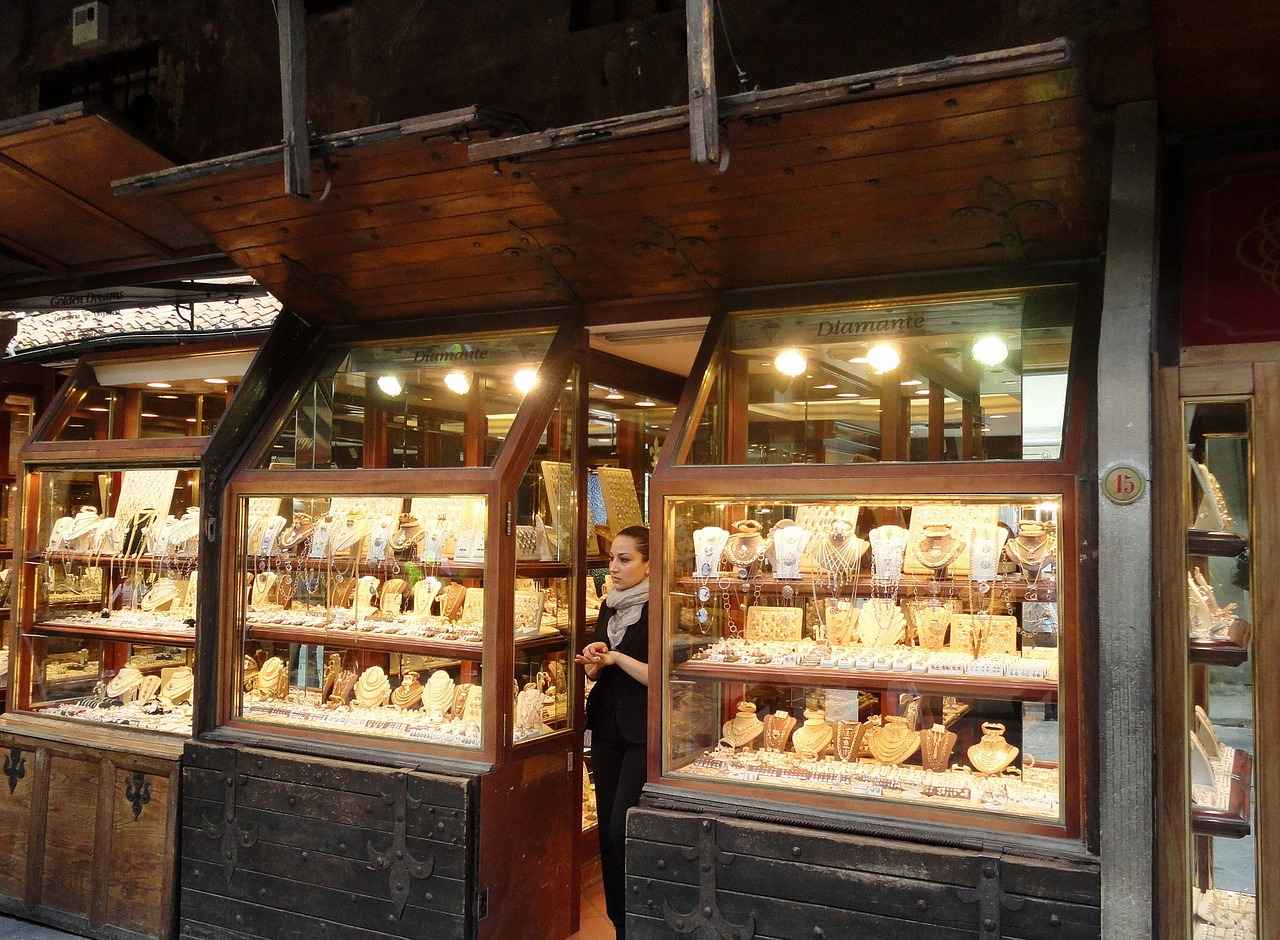
What to Consider Before Engraving Jewelry?
When considering the addition of engraving to your jewelry, it is essential to evaluate various factors to ensure that the personalization aligns with your long-term goals. Engraving can add a unique touch to a piece, but it also carries implications for its value and your emotional connection to it. Here are key considerations to keep in mind:
Before proceeding with engraving, ask yourself: What do I want this piece to represent? Whether it’s a special date, a name, or a meaningful quote, understanding the significance of the engraving can help you make an informed decision.
It’s crucial to balance long-term investment potential with personal satisfaction. Engraved jewelry may appeal to you emotionally, but consider how it will affect its resale value in the future. Personal satisfaction should not overshadow the practicality of your investment.
The style of engraving can significantly influence both the aesthetic appeal and the value of your jewelry. Here are some popular styles:
- Block Letters: Clean and classic, ideal for names or dates.
- Cursive: Adds a personal touch, often used for quotes.
- Symbols: Heart shapes, infinity signs, or other meaningful icons.
Choosing the right style can enhance both the visual impact and sentimental value of the piece.
Personalization can affect the resale value of your jewelry. While some buyers may appreciate the uniqueness of engraved pieces, others may be deterred by the specific personalization. Research market trends to gauge how similar pieces have performed in resale scenarios.
Consider whether the engraved jewelry can be restored if necessary. Engraving can sometimes wear over time, and restoration options may vary based on the material and extent of wear. Understanding these possibilities can help you make a more informed decision.
Current market trends indicate a growing demand for personalized jewelry. This trend can influence your decision to engrave, as it may enhance the piece’s appeal to potential buyers in the future. Stay informed about consumer preferences to ensure your choices align with market demand.
Before making a final decision, consult with jewelers or appraisers who can provide insights into how engraving may affect the value of your piece. Their expertise can guide you in making choices that align with your jewelry goals.
Ultimately, engraving is a personal choice that can enhance the emotional significance of your jewelry. By carefully considering these factors, you can ensure that your decision aligns with both your personal desires and investment goals.
Long-term Investment vs. Personal Satisfaction
When considering the decision to engrave jewelry, it is essential to balance long-term investment potential with personal satisfaction. This balance is crucial as it directly influences the emotional connection one has with the piece, as well as its future value in the market.
Engraved jewelry often holds significant sentimental value, representing milestones, relationships, or personal achievements. For many, this emotional connection can outweigh the financial aspects of ownership. However, it is important to recognize that while an engraving may enhance personal satisfaction, it can also impact the piece’s resale value. The uniqueness of an engraving may limit the pool of potential buyers, as not everyone will resonate with the specific personalization.
To make an informed decision, consider the following factors:
- Market Trends: Research current trends in the jewelry market to understand how personalized pieces are valued. Engraved items often appeal to niche markets, which can fluctuate based on consumer preferences.
- Emotional Attachment: Reflect on the emotional significance of the piece. If the jewelry represents a cherished memory or relationship, the personal value may far exceed its market price.
- Quality of the Jewelry: The intrinsic value of the material and craftsmanship plays a significant role in long-term investment potential. High-quality pieces may retain value better, even with personalization.
- Potential for Restoration: Consider if the engraving can be removed or altered in the future. Some buyers may prefer the option to restore the piece to its original state.
Engraving can be a beautiful way to commemorate special occasions, but it is crucial to weigh its impact on both personal satisfaction and investment potential. If the goal is to create a lasting memory, then engraving may be worth the trade-off. However, if the primary concern is future resale value, it may be wise to consider alternatives that maintain the piece’s marketability.
Ultimately, the decision to engrave jewelry should align with your personal values and future intentions. Engraving can transform a standard piece into a treasured heirloom, but understanding its implications on long-term investment is equally important. By carefully considering these factors, you can make a choice that fulfills both your emotional desires and financial goals.
Choosing the Right Engraving Style
When it comes to jewelry, the details matter immensely, and one of the most significant details is the engraving style. can not only enhance the aesthetic appeal of a piece but also significantly influence its sentimental and financial value.
Engraving style is a crucial aspect of personalized jewelry. It reflects the wearer’s personality and the significance of the piece. The right style can evoke emotions, tell a story, and even serve as a lasting memory. When selecting an engraving style, consider the following:
- Personal Significance: The engraving should resonate with the wearer, whether it’s a meaningful date, a name, or a special quote.
- Aesthetic Appeal: The style should complement the overall design of the jewelry. For instance, a delicate script may suit a vintage piece, while bold block letters might enhance modern designs.
- Longevity: Consider how well the engraving will age. Intricate designs may fade over time, while deeper engravings can stand the test of time.
There are various engraving styles to choose from, each with its own unique characteristics and appeal:
| Engraving Style | Description | Best Suited For |
|---|---|---|
| Script | Elegant and flowing, often resembling handwriting. | Romantic gifts, wedding bands. |
| Block | Bold and straightforward, often easier to read. | Modern pieces, masculine designs. |
| Symbolic | Incorporates symbols or images instead of text. | Unique personal stories, anniversaries. |
| Hand Engraved | Artisan style, often featuring intricate designs. | High-end jewelry, heirlooms. |
Here are some practical tips to help you select the perfect engraving style:
- Consider the Occasion: Different occasions may call for different styles. A wedding might warrant a romantic script, while a graduation could be best suited for a bold block style.
- Think About the Metal: The type of metal can affect how engravings appear. For example, white gold may require deeper engravings to stand out compared to yellow gold.
- Consult with Experts: Don’t hesitate to seek advice from jewelers or engravers. They can provide insights into what styles work best with specific pieces.
- Visualize the Result: If possible, ask for samples or mock-ups of the engraving. This can help you better understand how your chosen style will look on the actual piece.
In conclusion, selecting the right engraving style is a blend of personal preference, aesthetic considerations, and practical insights. By taking the time to understand the various styles and their implications, you can ensure that your engraved jewelry not only holds sentimental value but also appeals to future buyers, should you ever decide to part with it.
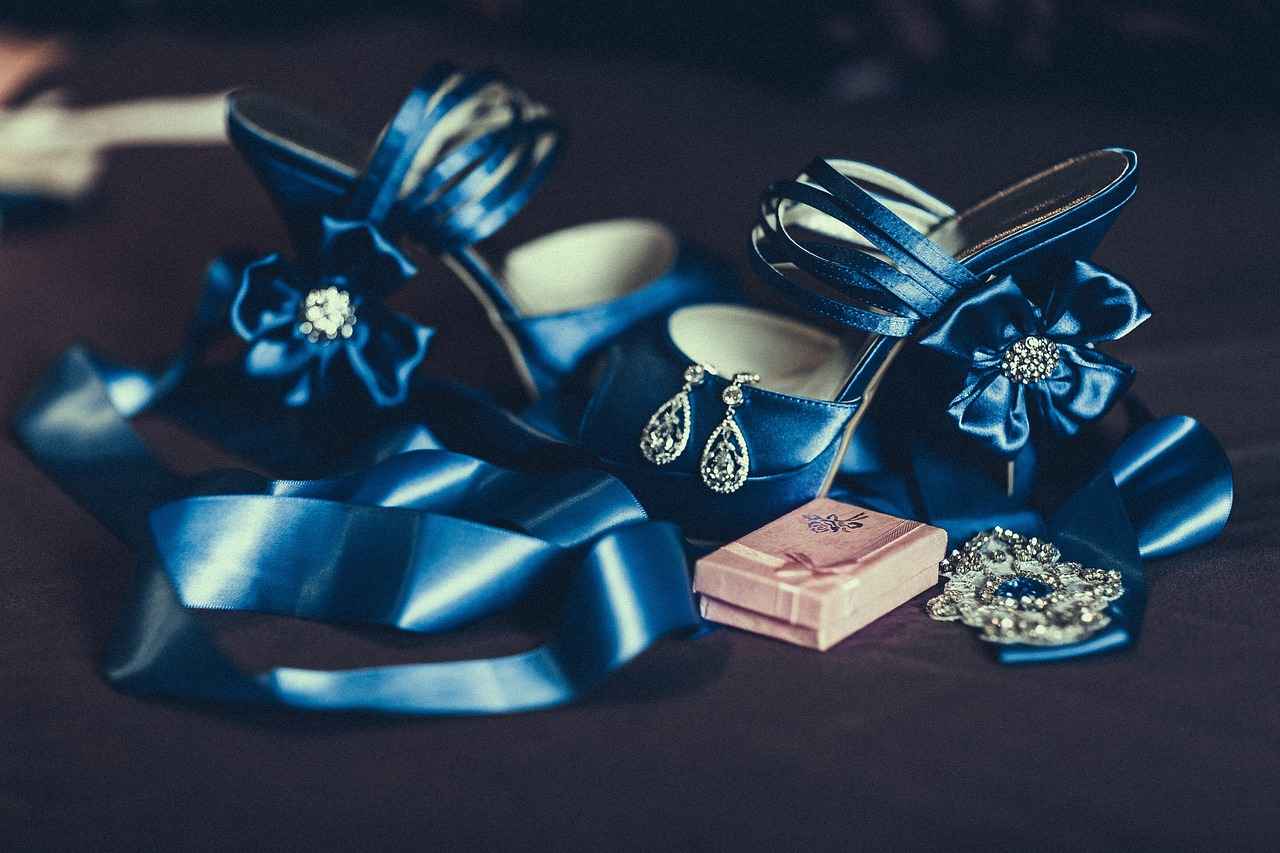
Can Engraved Jewelry Be Restored or Resold?
Engraved jewelry often carries deep emotional significance, representing cherished memories, special occasions, or personal milestones. However, when it comes to restoration and resale, the unique characteristics of these pieces raise important questions. This section explores the feasibility of restoring engraved jewelry and the potential for reselling personalized items in today’s market.
Restoring engraved jewelry can be a complex process. The challenges often stem from the intricacy of the engravings themselves. Depending on the extent of wear, damage, or tarnishing, restoration may involve:
- Re-engraving: This process can be tricky, as it requires matching the original style and depth of the engraving.
- Polishing: While polishing can enhance the piece’s appearance, it risks altering the engraved areas.
- Repairing Damage: Cracks or breaks in the jewelry may require soldering or other repair techniques that could impact the engravings.
Each restoration method comes with its own set of risks and potential impacts on the jewelry’s value.
The decision to restore engraved jewelry often hinges on both sentimental and financial considerations. Factors to weigh include:
- Emotional Attachment: If the piece holds significant personal value, restoration may be worthwhile regardless of cost.
- Market Demand: Understanding current trends in the resale market can help determine if restoration will enhance the piece’s value.
- Cost of Restoration: Evaluating whether the restoration costs outweigh the potential increase in resale value is crucial.
The resale market for engraved jewelry can be challenging due to its personalized nature. Here are some key aspects to consider:
- Limited Audience: Engraved pieces often appeal to a narrower audience, as buyers may seek specific personal connections or meanings.
- Market Trends: The value of personalized jewelry can fluctuate based on consumer preferences and market trends, impacting resale potential.
- Condition and Restoration: Pieces that have been well-maintained or professionally restored may fetch higher prices compared to those showing signs of wear.
If you decide to restore and resell engraved jewelry, consider these strategies:
- Professional Restoration: Opt for reputable jewelers who specialize in restoration to ensure quality work that maintains the integrity of the piece.
- Document the Restoration Process: Keeping records of the restoration can enhance buyer confidence and justify the asking price.
- Highlight Unique Features: When listing the item for sale, emphasize the emotional and historical significance of the engraving to attract potential buyers.
Experts in the jewelry industry often stress the importance of understanding the market dynamics surrounding engraved pieces. They recommend:
- Consulting Appraisers: Before making restoration decisions, consulting with appraisers can provide valuable insights into the potential value of the piece.
- Staying Informed on Trends: Keeping abreast of current trends in the jewelry market can help sellers position their pieces more effectively.
In conclusion, while restoration and resale of engraved jewelry present unique challenges, they also offer opportunities for preserving personal history and potentially realizing value. By understanding the intricacies involved, both sentimental owners and savvy investors can navigate the complexities of this niche market.
Restoration Options for Engraved Jewelry
Engraved jewelry holds sentimental value, often cherished for its personal touch. However, over time, these pieces may experience wear and tear, leading to questions about their restoration. Understanding the available restoration options is essential for maintaining the beauty and integrity of your engraved jewelry.
Various restoration options exist for engraved jewelry, depending on the extent of wear or damage. Here are some common techniques:
- Cleaning and Polishing: Regular cleaning can restore the shine of engraved jewelry. Professional jewelers can use ultrasonic cleaners or steam cleaning methods to remove dirt and grime without damaging the engraving.
- Re-engraving: If the engraving has faded or become less visible, re-engraving can be an effective solution. Skilled artisans can carefully recreate the original design, ensuring it looks fresh and vibrant.
- Repairing Scratches: Surface scratches can detract from the overall appearance of engraved jewelry. Jewelers often use specialized polishing compounds to minimize these imperfections, restoring the piece’s original luster.
- Stone Replacement: If your engraved jewelry features gemstones, they may become loose or damaged over time. Jewelers can replace or secure these stones, ensuring the piece remains intact and visually appealing.
- Metal Refinishing: For pieces made of precious metals, refinishing can help remove tarnish and restore the original color. This process involves buffing and polishing the metal surface, which can dramatically improve the overall look of the jewelry.
Recognizing when to restore your engraved jewelry is crucial. Here are some signs that indicate it might be time for restoration:
- Visible scratches or tarnish on the surface.
- Fading or loss of detail in the engraving.
- Loose stones or settings that may compromise the piece’s integrity.
- Changes in personal style or preference that warrant an update to the jewelry’s appearance.
Selecting the right professional for your restoration needs is vital. Consider the following tips:
- Experience and Expertise: Look for jewelers who specialize in engraved jewelry and have a proven track record of successful restorations.
- Portfolio Review: Ask to see examples of their previous work to assess their skills and style.
- Customer Reviews: Research online reviews and testimonials to gauge customer satisfaction and reliability.
- Consultation: A good jeweler will offer a consultation to discuss your specific needs and provide recommendations.
The costs of restoring engraved jewelry can vary widely based on the type of restoration needed, the materials involved, and the jeweler’s expertise. Here are some factors influencing the cost:
- Extent of Damage: More extensive damage typically requires more time and resources, leading to higher costs.
- Material Type: Precious metals and high-quality gemstones may incur additional costs compared to less expensive materials.
- Location: Prices can vary based on geographic location and the local market for jewelry repair services.
In summary, restoring engraved jewelry not only preserves its beauty but also maintains its sentimental value. By understanding the various restoration options and choosing the right professionals, you can ensure your cherished pieces remain in excellent condition for years to come.
Resale Market for Engraved Pieces
The resale market for engraved jewelry is a complex landscape that presents both opportunities and challenges for sellers. Understanding the dynamics of this market is essential for anyone looking to sell personalized pieces. In this section, we will explore various factors that influence the resale value of engraved jewelry, including market trends, consumer preferences, and expert insights.
Engraved jewelry holds a special place in the market due to its personalization. Unlike standard pieces, engraved items often carry significant emotional value for the original owner, which can complicate resale. The uniqueness of these pieces may limit the potential buyer pool, as many consumers prefer to purchase items that resonate with their own experiences.
- Consumer Demand: The demand for personalized jewelry has surged in recent years, driven by trends in gifting and self-expression. However, this demand can fluctuate based on changing consumer preferences.
- Brand Influence: Well-known brands often command higher resale values, even for engraved pieces. Buyers are more likely to invest in items from reputable jewelers.
- Condition and Quality: The physical condition of the jewelry plays a crucial role in its resale potential. Well-maintained pieces with high-quality engravings are more likely to attract buyers.
While there are opportunities in the resale market, several challenges can hinder the sale of engraved jewelry:
- Emotional Attachment: Sellers may find it difficult to part with engraved pieces that hold sentimental value, which can lead to overpricing.
- Niche Market: The market for engraved jewelry is often niche, making it harder to find buyers who appreciate the specific personalization.
- Resale Platforms: Choosing the right platform for resale is crucial. Some platforms may not cater to engraved jewelry, limiting exposure to potential buyers.
To navigate the challenges of selling engraved jewelry, consider the following strategies:
- Highlight the Story: When listing an engraved piece, emphasize the story behind the engraving. This can attract buyers who resonate with the emotional aspect of the jewelry.
- Professional Appraisal: Obtaining a professional appraisal can provide an objective value assessment, helping to set a realistic asking price.
- Utilize Social Media: Leverage social media platforms to reach a broader audience. Showcasing the piece in various settings can increase interest.
Experts emphasize the importance of understanding market trends and consumer behavior when selling engraved jewelry. Jewelers often recommend focusing on the quality of the engraving and the overall craftsmanship of the piece. Additionally, appraisers suggest that sellers should be prepared for a potentially lower resale value compared to non-personalized items due to the limited buyer pool.
In conclusion, while the resale market for engraved jewelry can be challenging, understanding its dynamics can aid sellers in making informed decisions. By focusing on the unique aspects of personalized pieces and employing effective selling strategies, individuals can enhance their chances of a successful sale.
Frequently Asked Questions
- Does engraving jewelry affect its resale value?
Yes, engraving can impact resale value. While personalized pieces may hold significant emotional value, they might not appeal to all buyers, potentially lowering resale prices compared to non-engraved items.
- What are the benefits of personalized jewelry?
Personalized jewelry often carries a unique emotional connection, making it special for the wearer. It can commemorate important events or relationships, enhancing its sentimental value.
- Can engraved jewelry be restored?
Yes, many engraved pieces can be restored, depending on their condition. Common restoration techniques include polishing, re-engraving, or even redesigning the piece to maintain its charm.
- Do engraved pieces sell faster than non-personalized ones?
It varies! Engraved pieces can sell faster if they align with current trends and consumer preferences. However, factors like design and brand also play a significant role in selling speed.
- What should I consider before engraving jewelry?
Consider the long-term emotional and financial implications. Think about how the engraving aligns with your personal satisfaction versus its potential investment value in the future.
